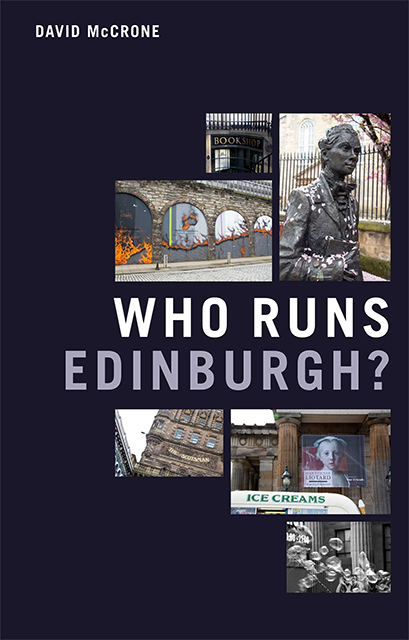Book contents
- Frontmatter
- List of Contents
- Figures and Tables
- Preface
- 1 Who Runs Edinburgh?
- 2 Politics in Edinburgh
- 3 Winners and Losers: The Political Economy of Edinburgh
- 4 Treading Angels: Edinburgh and its Festivals
- 5 Are You One of Us? Status in the City
- 6 What School did You Go To? Education and Status in Edinburgh
- 7 Enlightened City: Cultural Power and University Life
- 8 Developing Edinburgh: Pies in the Sky, Holes in the Ground
- 9 Lost in Leith: Accounting for Edinburgh’s Trams
- 10 Does Anyone Really Run Edinburgh?
- Bibliography
- Index
Preface
Published online by Cambridge University Press: 25 October 2023
- Frontmatter
- List of Contents
- Figures and Tables
- Preface
- 1 Who Runs Edinburgh?
- 2 Politics in Edinburgh
- 3 Winners and Losers: The Political Economy of Edinburgh
- 4 Treading Angels: Edinburgh and its Festivals
- 5 Are You One of Us? Status in the City
- 6 What School did You Go To? Education and Status in Edinburgh
- 7 Enlightened City: Cultural Power and University Life
- 8 Developing Edinburgh: Pies in the Sky, Holes in the Ground
- 9 Lost in Leith: Accounting for Edinburgh’s Trams
- 10 Does Anyone Really Run Edinburgh?
- Bibliography
- Index
Summary
Another book on Edinburgh: why one of those? There is, indeed, no shortage of books on the city, but they are mainly about buildings and history and heritage; nothing wrong with that, but arguably it gives a distorted impression of Edinburgh. When I came to Edinburgh in the 1960s as a student, Sandy Youngson’s book The Making of Classical Edinburgh was about to be published. Edinburgh University Press was nervous about sales, and drummed up subscribers whose names appeared at the back of the first edition. They need not have worried, as Youngson’s book became a classic in its own right, especially in its sumptuous first edition. To a young impecunious student (who could not afford to subscribe) it was a lesson in writing lucidly and laterally, for Youngson was an economist, or rather, an economic historian, and was able to tell the story of the building of the New Town across economics, politics and culture. It was, though, about classical Edinburgh, of the eighteenth and early nineteenth centuries, and to a student of sociology the puzzle was who ran (and runs) this city today.
In the 1970s, with my friend and colleague Brian Elliott, I began a study of landlordism in Edinburgh, and in 1989 we published it with the title Property and Power in a City: The Sociological Significance of Landlordism. Truth to tell, the book was far more about landlordism than it was about property and power in Edinburgh, but it sowed seeds which lay in the ground a long time and took a while to come to fruition. We got side-tracked by writing another book, The City: Patterns of Domination and Conflict (1982). The allusion to Max Weber’s classic The City was deliberate, because we thought that much of urban studies in those days underplayed the role of politics and power for our liking. Although we thought of ourselves as urban sociologists, other activities intervened. Brian went to Canada, to Vancouver, and had much to say about property and power in that city. I got heavily involved in the sociology and politics of Scotland, culminating in The New Sociology of Scotland, published in 2016.
The question, Who Runs Edinburgh?, never went away. Coming to a city you do not know because you were not born and brought up there can be disconcerting, and a source of puzzlement, because you cannot take many things for granted.
- Type
- Chapter
- Information
- Who Runs Edinburgh? , pp. ix - xiiPublisher: Edinburgh University PressPrint publication year: 2022

